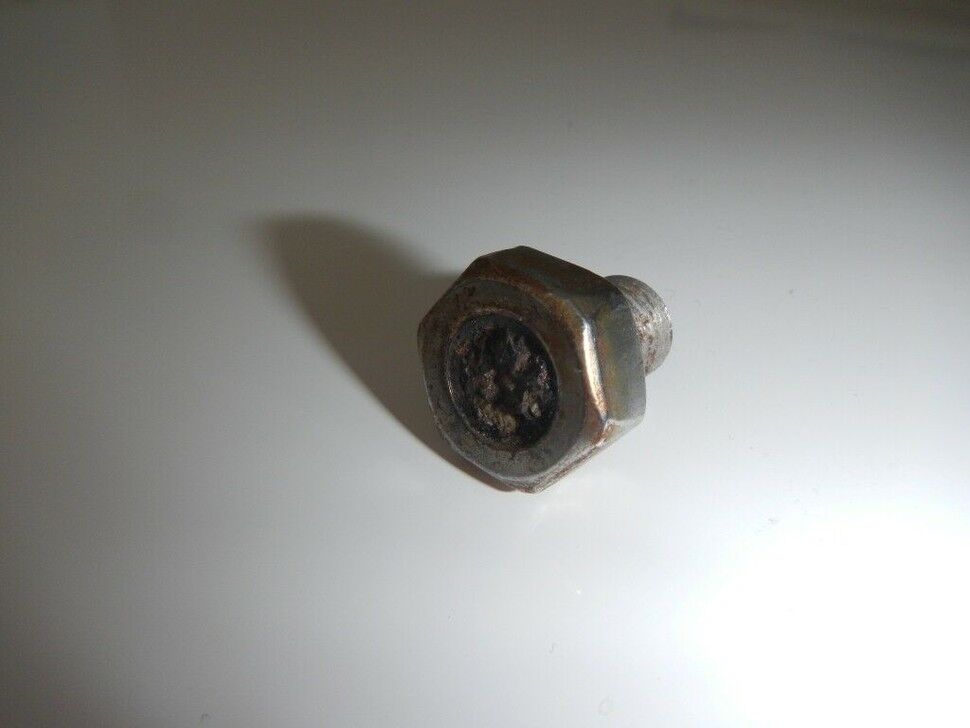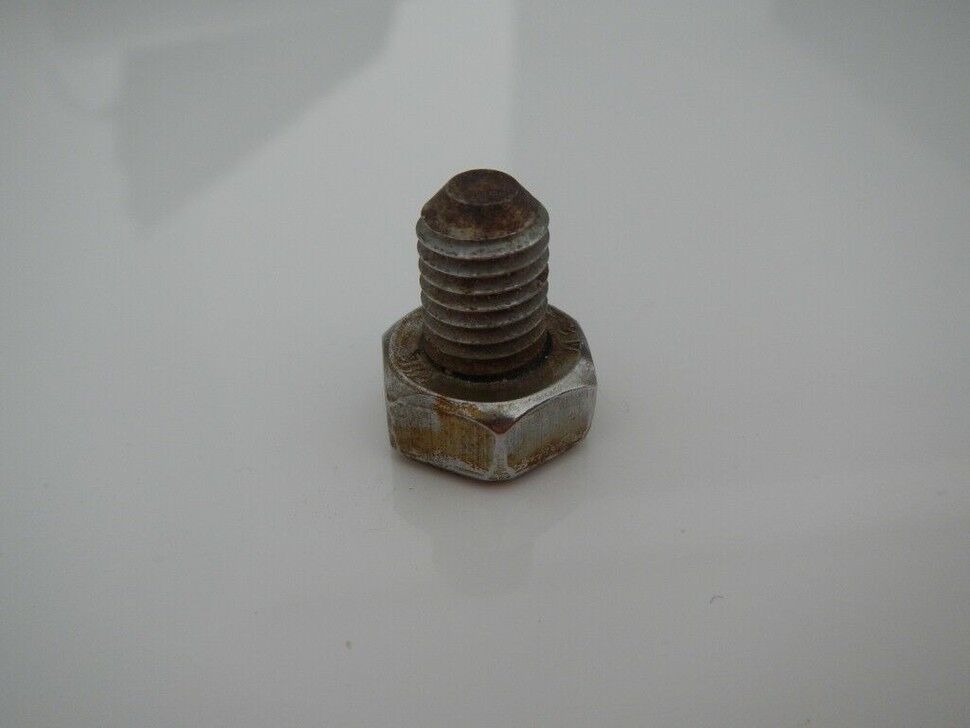
On Tuesday 14th August, while leading two friends on Freebird 6b, the three pitch route on Wall of Wonders at the Blue Grotto Promontory, a bolt at the first stance failed suddenly and without warning. The second bolt of the stance held our weight and prevented what could have been a very serious situation had three people tied together fallen into the sea 5m below, which was heaving with a heavy swell. Luckily I was able to hold on to the failed bolt and hanger so I could investigate what happened (see photo). I would strongly recommend NOT CLIMBING Freebird until the bolts on the first and second pitches have been replaced by marine steel bolts.
The bolts used by Jon Wigg and Mark Charlton on Freebird in 2007 are stainless steel bolts, not marine steel. The failed bolt showed almost no external signs of corrosion and looked perfectly sound, yet inside the metal was cancerous. This is the first clear case of SCC – stress corrosion cracking – that I have experienced in Malta. Stress corrosion cracking is a phenomenon that has been around for a while but is still not properly understood. It occurs mostly in tropical marine environments and refers to a process of corrosion which is caused by a combination of high chlorides, high temperatures and very high humidity in the air and rock around the bolt. It results in severe weakening of the stainless steel of the bolt, which according to the UIAA can fail at anything between 1 – 5KN. A typical bolt should be able to hold 22KN! In this case, I estimate the failure occurred at less than 1KN because all three climbers were standing on the ledge and only leaning out on the bolt for support. Our weight was shared equally between the two bolts, as it should be on such a stance.
Freebird would be one of the routes most at risk to SCC. It’s first two pitches are within the splash zone, so sea-salt is plentiful both in the rock and on the bolts themselves. It is also in an extremely humid environment because the crag sees relatively little sun, which comes off the face by mid-morning. Whoever has climbed it in summer will have noticed how they sweat more than would be expected on a route in the shade – evidence of the extremely high humidity level there. So the conditions described in all the reports about SCC are the most prevalent and therefore dangerous on Wall of Wonders. In fact these bolts have only been in place for 5 years and I have seen bolts in better condition after 20 years in other locations close to the sea which get strong sunlight all day.
The decision which we had taken from the outset for the MTA-MRCC Bolting Project was to only install marine steel bolts (316 steel) in sea cliffs. In fact most of the bolts and lower-offs we install as part of this project are marine steel because you can consider Malta to be a marine environment, even some distance inland. We still have to look into this matter in more depth but the reports I have read so far refer to SCC as an imminent danger only in stainless steel bolts installed by the sea which are not intended for this environment, i.e. stainless steel (not marine steel) bolts. Even with marine steel bolts, exercise caution and examine a bolt for corrosion before trusting it.
What are the immediate implications of this event? Here are my strong recommendations:
- Do not climb on Freebird until the bolts of pitches 1 and 2 have been replaced with marine steel resin bolts. I will try and do this work in the coming days.
- Be aware of this phenomenon, read up about it here http://www.theuiaa.org/news_375_Safety-Commission-issues-update-of-corrosion-notice-for-anchors-in-marine-locations and exercise extreme caution in trusting 304 stainless steel hardware anywhere it can be reached by the sea or sea winds.
- Do not install any more hardware which is not rated as marine steel anywhere on the sea cliffs of Malta and Gozo.
- Be suspicious of extremely humid crags which face the sea. Thaiwand walls has shown extreme levels of humidity towards the start of summer. Circus Oz is mostly equipped with marine steel bolts, except for the original two bolts near the top. These will eventually be replaced. All new routes there are equipped with marine resins.
The episode that I and my friends experienced last Tuesday is a big eye-opener and should serve to alert us all. I would never have suspected the bolt, despite having examined it visually when I got to the stance. The sudden failure could have been catastrophic – anywhere else on the route and the fall would have been much longer and possibly onto jutting rocks. A proper analysis of the situation, extreme caution and clear awareness of the consequences of potential failure will keep us all a little bit safer. A meeting will be called for all the people involved in bolting on Malta and Gozo to discuss the issue and come up with concrete actions to tackle and as much as possible prevent the occurrence of SCC at source.
If you have any comments or questions please contact us.




